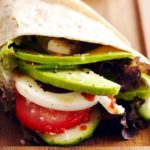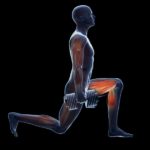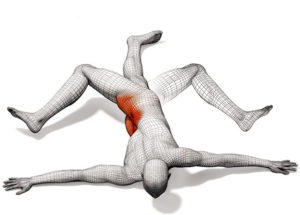Happy Wednesday!
This is a 3 part series in which I will be sharing the top 3 secrets for fat loss and enhanced body composition. Part 1 is centred around “Interval Training”. Now before I go ahead and supply you with a few sample exercise protocols below that you can start immediately (I came across a great illustration from greatist.com that I wish I could take credit), first I want to drop some knowledge bombs.
Interval training (IT) involves multiple bouts of exercise with coordinated rest periods. All IT methods revolve around work-to-rest ratios that can vary in duration, intensity, and frequency all depending on one’s fitness level. IT is suitable for beginners looking to start a fitness program or even high endurance runners/athletes looking to increase their aerobic and muscular endurance.
Low intensity interval training (LIIT) incorporates bouts of low-moderate intensity exercise with intermittent rest periods. Examples include a power walk for 60 secs either on a treadmill or completed outdoors with 60 secs or a light paced walk. On the other end of the spectrum is high intensity interval training (HIIT) whereby a mixture of high intense exercise like sprinting or resistance training with moderate weight is combined with scheduled rest times or consecutive exercises thereby minimizing and “down or rest” time and maintaing a higher heart rate for a set duration.
LIIT & HIIT has been shown to induce the following benefits when implemented in one’s weekly routine:
1. Aerobic Capacity (i.e., Healthier Heart)
A study found that participants incorporating IT produced similar muscular endurance adaptations despite exercising much less than individuals completing long duration endurance type training. According to a 2011 ACSM study, just 2 weeks of high-intensity intervals improves your aerobic capacity as much as 6 to 8 weeks of endurance training.
2. Burn More Calories
A key component in analyzing the effectiveness of total calories burned in a workout is the time period once the workout is concluded whereby energy expenditure is still higher than say at rest. This effect of exercise, regardless of intensity, is called excess post-exercise oxygen consumption or EPOC. Basically, the more intense a workout the greater the EPOC or longer duration following a workout where you are still burning more calories.
A 2006 study concluded that the additional calories burned from EPOC for a steady-state (lower intense) endurance exercise was approximately 7% of the total calories expended during the workout. Conversely, calories from EPOC for HIIT workouts were almost double, approximately 13% of total calories during the workout.
3. Lose Weight Not Muscle
When dieting and completing traditional cardio type exercises (i.e., jogging) alone, one can lose bodyweight but will illicit no significant change to their overall body fat % since lean muscle tissue will also be lost. By completing IT that incorporates both aerobic and resistance training type exercises, you can reduce your total body fat % while preserving, or more importantly enhancing, lean muscle tissue. Remember, preserving your lean muscle mass is critical as you age as muscle can assist with the prevention of chronic injuries, maintaining joint health and reduction in metabolic diseases like obesity, hypertension, and diabetes.
4. Increased Metabolism
Your metabolism plays a major role in the rate your burn energy and store nutrients from your food. Another powerful benefit of IT, specifically HIIT, is that this type of training stimulates production of your human growth hormone (HGH). A 2002 study in the Journal of Sport Science has shown that HIIT increased the production of HGH by up to 450 percent during the 24 hours after you finish your workout. A key thing to note is that HGH is not only responsible for increased caloric burn but also slows down the aging process – check and check!
Other physiological benefits of LIIT/HIIT include where highlighted by a 2011 study:
– Improved insulin sensitivity in the muscles
– Higher levels of fat oxidation in the muscles
– Post-exercise appetite suppression
Without further adieu, here is a kick-ass illustration that summarizes things and supplies you with some simple interval protocols for both beginners and season vets.
Stay tuned to next week as I will continue this series and discuss the second fat loss secret (hint: it has something to do with lifting things).
As always, I appreciated feedback – both positive and negative – so don’t be afraid to share your thoughts. Lastly, please share via FB, twitter or LinkIn – big thanks!
Until next time – stay strong!
Oz







